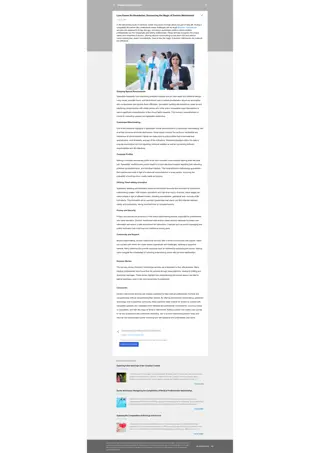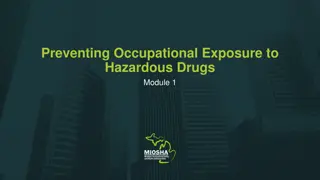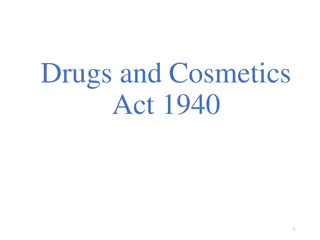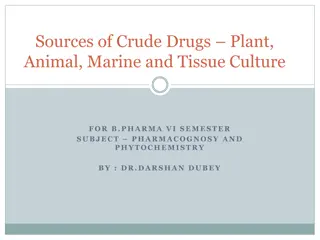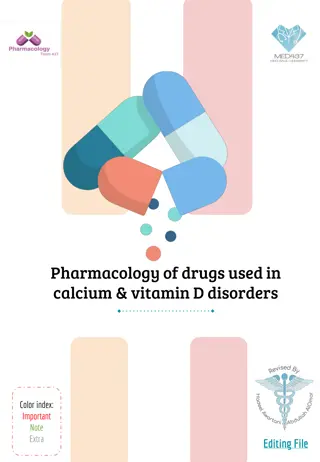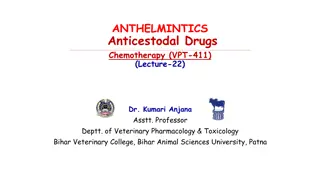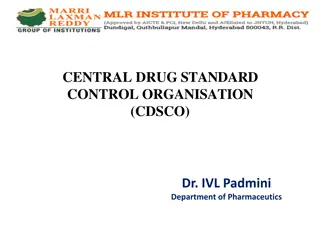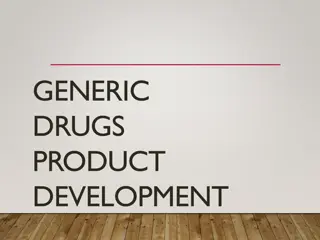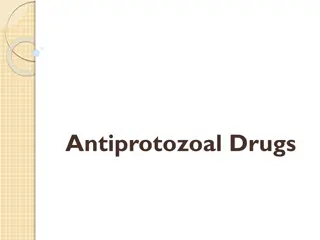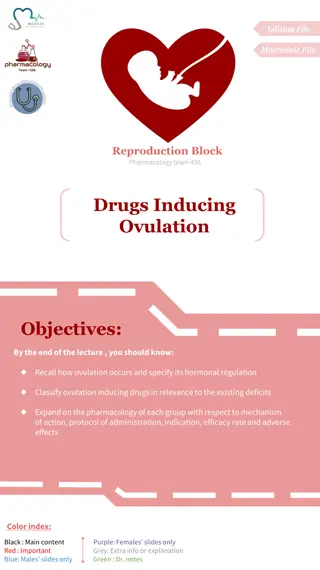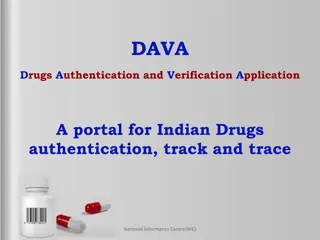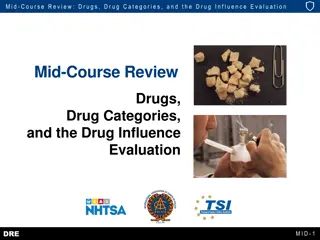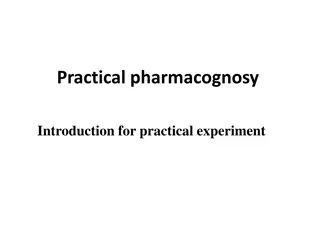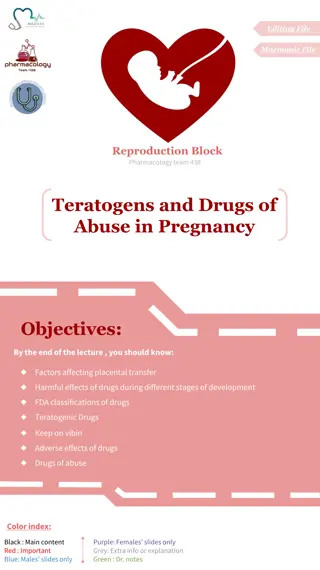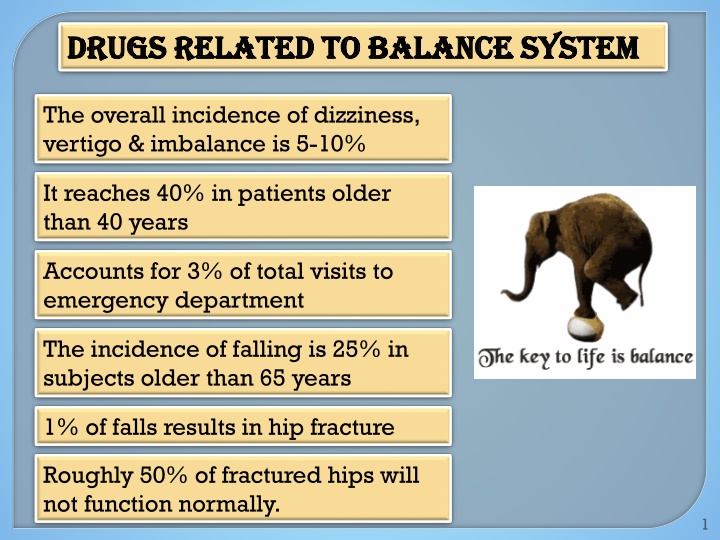
Drugs Related to Balance System and Vertigo Disorders
Explore the incidence, symptoms, and pharmacologic approach of balance-related issues, with a focus on drugs for vertigo and balance disorders. Learn about common vertigo conditions and treatment options.
Download Presentation

Please find below an Image/Link to download the presentation.
The content on the website is provided AS IS for your information and personal use only. It may not be sold, licensed, or shared on other websites without obtaining consent from the author. If you encounter any issues during the download, it is possible that the publisher has removed the file from their server.
You are allowed to download the files provided on this website for personal or commercial use, subject to the condition that they are used lawfully. All files are the property of their respective owners.
The content on the website is provided AS IS for your information and personal use only. It may not be sold, licensed, or shared on other websites without obtaining consent from the author.
E N D
Presentation Transcript
Drugs Related to Balance System Drugs Related to Balance System The overall incidence of dizziness, vertigo & imbalance is 5-10% It reaches 40% in patients older than 40 years http://i183.photobucket.com/albums/x62/GraphEmp/COMMENTS/QUOTES/ele025.gif?t=1252881386 Accounts for 3% of total visits to emergency department The incidence of falling is 25% in subjects older than 65 years 1% of falls results in hip fracture Roughly 50% of fractured hips will not function normally. 1
Drugs Related to Balance System Drugs Related to Balance System http://i.ehow.com/images/a04/fa/ug/cure-vertigo-800X800.jpg ILOS To differentiate between classes of drugs used to control or to prevent vertigo To hint on some disorders of balance To detail on some drugs used to control or to prevent vertigo To identify drugs that can precipitate vertigo. 2
Drugs Related to Balance System Drugs Related to Balance System Balance Disorders Vertigo is a hallucination of motion that in most cases implies a disorder of the inner ear or vestibular system. Definition Terms Dizziness Light headedness M ni re'sdisease Vertigo 3
Symptoms Symptoms http://www.bestfayettevillechiropractor.com/img/dizziness.jpg Spinning (vertigo) Confusion or disorientation Falling or feeling as if one is going to fall Nausea or vomiting Optokinetic nystagmus.gif Sweating Abnormal eye movement (nystagmus). 4
Balance disorders Balance disorders Benign paroxysmal positional vertigo:-A change in head position causes a sudden sensation of spinning Acute labyrinthitis:-Inflammation of the balance apparatus of the inner ear, probably caused by a viral infection M ni re's disease:- This causes repeated episodes of dizziness, usually with ringing in the ear & progressive low-frequency hearing loss. 5
Pharmacologic approach Pharmacologic approach Involves targeting the underlying cause of the vertigo (e.g., ear infection). Involves controlling the acute symptoms & autonomic complaints (e.g., vertigo & vomiting) Specific treatment Symptomatic treatment Prophylactic treatment Aims to reduce the recurrence of specific vertiginous conditions Diuretics (but not loop diuretics) Corticosteroids Ca & K Channel Blocker & antihistamine e.g. Cinnarizine. 6
Symptomatic control are drugs that reduce the intensity of vertigo & nystagmus evoked by a vestibular imbalance, e.g : Vestibular suppressants Antiemetics 1-Anticholinergics 2-Benzodiazepines 3-Betahistine 7
1-Anticholinergics 2-Benzodiazepines In small dosages useful for the management of acute vertigo Anticholinergics inhibit firing in vestibular nucleus neurons Minimize anxiety & panic associated with vertigo Reduce the velocity of vestibular nystagmus e.g. Lorazepam, Clonazepam, Diazepam e.g. hyoscine, also useful in motion sickness & sedation ADRs:- Dependence, impaired memory, increased risk of falling. ADRs:- dry mouth, blurred vision, sedation. 8
3-Betahistine Mechanism of Action:- By stimulating H1 receptors located on blood vessels in the inner ear local vasodilation & increased It is a structural analog of histamine with weak Betahistine increases the level of serotonin in the brainstem the activity of vestibular nuclei. concentration of histamine in the inner ear. problem of endolymphatic hydrops. histamine H3 receptor antagonist properties By bloking H3 receptors, Betahistine increases the local permeability, which helps to reverse the underlying histamine H1 receptor agonist & more potent Agonist 9
Pharmacokinetics of betahistine Formulated as tablet or oral solution Rapidly & completely absorbed ADRs:- t = 3-4 hours, excreted in urine within 24 hours Headache Nausea Low protein binding. GIT side effects. Contraindications Phaeochromocytoma Bronchial asthma History of peptic ulcer Hypersensitivity reactions. 10
Clinical indications Betahistine is indicated for treatment of M ni re's syndrome. Efficacy and safety of betahistine treatment in patients with Meniere s disease: primary results of a long term, multicentre, double blind, randomised, placebo controlled, dose defining trial (BEMED trial) BMJ 2016; 352 Current evidence is limited as to whether betahistine prevents vertigo attacks caused by Meniere s disease, compared with placebo reactions. 94% of ENT surgeons in Britain prescribe betahistine for Meniere disease, while in USA they think it is no better than a placebo . 11
Antiemetics Antiemetics Antiemetics are drugs used to control vomiting & nausea such as: Antihistamines e.g. Dimenhydrinate Phenothiazines e.g. prochlorperazine Dopamine antagonists e.g. metoclopramide & domperidone. 12
Diminhydrinate Diminhydrinate ADRs:- Sedation Dizziness Anticholinergic side effects. - Weak anticholinergic effects - Block H1 receptors in CRTZ - Sedative effects Excitability in the labyrinth & blocking conduction in vestibular- cerebellar pathways http://www.thenaturalhealthonline.com/images/Benign_Prostatic_Hyperplasia_(BPH).jpg Contraindications:- Glaucoma Prostatic enlargement In vertigo Indications Prevent nausea & vomiting associated with motion sickness. 13
Prochlorperazine Prochlorperazine Antipsychotic, some sedation + antiemetic Mechanism of action: Blocks DOPAMINE receptors at CRTZ Indications: One of the best antiemetics in vertigo, has some vestibular suppressant action. 14
Metoclopramide&DOMPERIDONE block DOPAMINE D2 receptors in the CRTZ of the medulla, resulting in potent central antinausea & antiemetic action Has some sedative action Has potent gastroprokinetic effect ADRS:- Restlessness or drowsiness Extrapyramidal manifestations on prolonged use. 15
Cinnarizine Cinnarizine Mechanism of action Selective Ca2+channel blocker (vascular smooth muscle relaxation), antihistamine, antiserotonin, antidopamine It promotes cerebral blood flow Increased hydrostatic pressure on hair cells activates K+ currents Cinnarizine inhibits K+ currents. Inhibition of K+ currents lessen the vertigo & motion- induced nausea by dampening the over-reactivity of the vestibular hair cells. 16
Pharmacokinetics Pharmacokinetics Taken orally in tablet form Rapidly absorbed Low oral bioavailability due to hepatic first pass metabolism If administered IV in lipid emulsion, it has better bioavailability. Clinical uses:- Used to treat nausea & vomiting associated with motion sickness, vertigo & Meniere s disease. ADRS:- Sweating Drowsiness & Headache Muscle rigidity & tremor Contraindications Parkinsonism Car drivers. 17
Drugs inducing vertigo Drugs inducing vertigo Drugs producing damaging effects on structure or function of labyrinthine hair cells &/ or their neuronal connections Vestibular toxins Mixed ototoxins Drugs altering fluid & electrolyte balance: Diuretics Alter function Drugs altering vestibular firing (neuronal depressants): Anticonvulsants Antidepressants Sedative hypnotics Alcohol Cocaine 18
Mixed Mixed ototoxins ototoxins Quinine, chloroquine, quinidine Nitrogen mustard Loop diuretics NSAIDs Tobacco Gentamycin Induce apoptosis byevoking free radicals Mitochondrial Pathway Aminoglycoside antibiotics; e.g. gentamycin, kanamycin, neomycin, streptomycin Alter function Neomycin Induce apoptosis by activating caspases Death Receptor Pathway Local blood flow biochemical changes electromechanical transduction firing of impulse Alter structures 19
Synopsis Synopsis Drugs Affecting Balance https://balancechicago.files.wordpress.com/2009/08/cartoon1.jpg?w=300h=180 Drugs to treat vertigo Drugs inducing vertigo Vestibular toxins Mixed ototoxins Specific Symptomatic Prophylactic e.g. Vestibular suppressants Antiemetics Diuretics Antibiotics Anticholi nergics Antihista mines Corticost eroids Ca/K Benzodia zepines Phenothia zines antagonists Dopamine antagonist Betahistine 20

